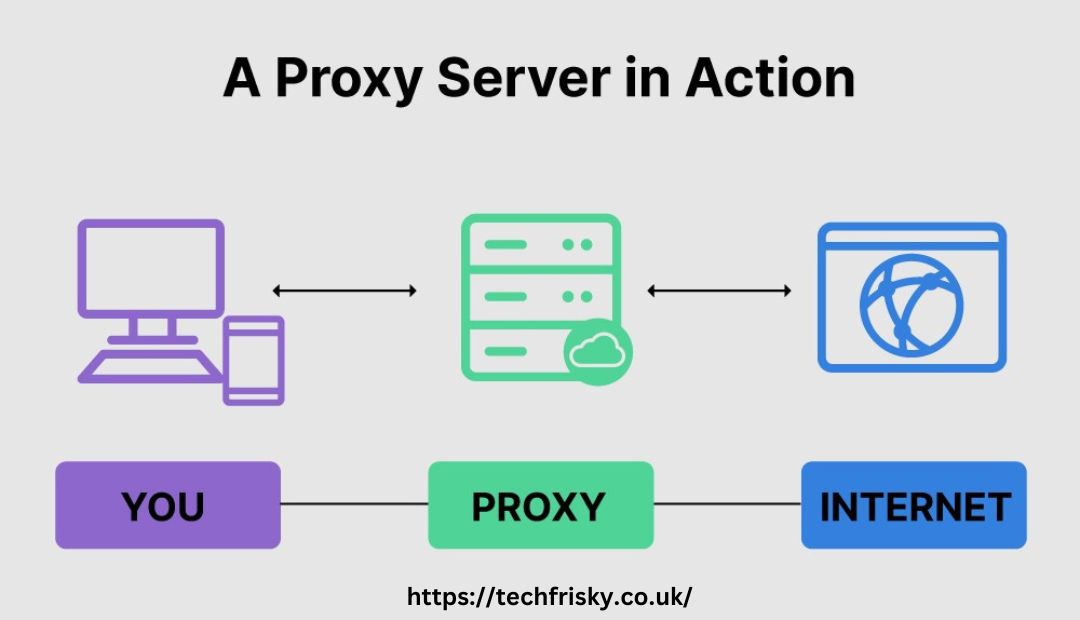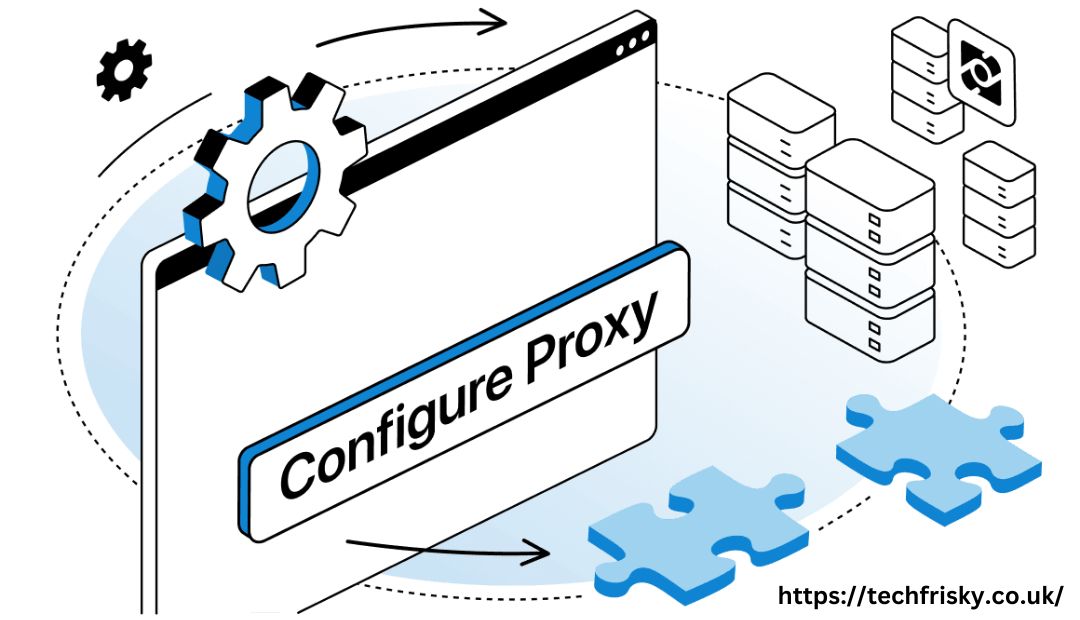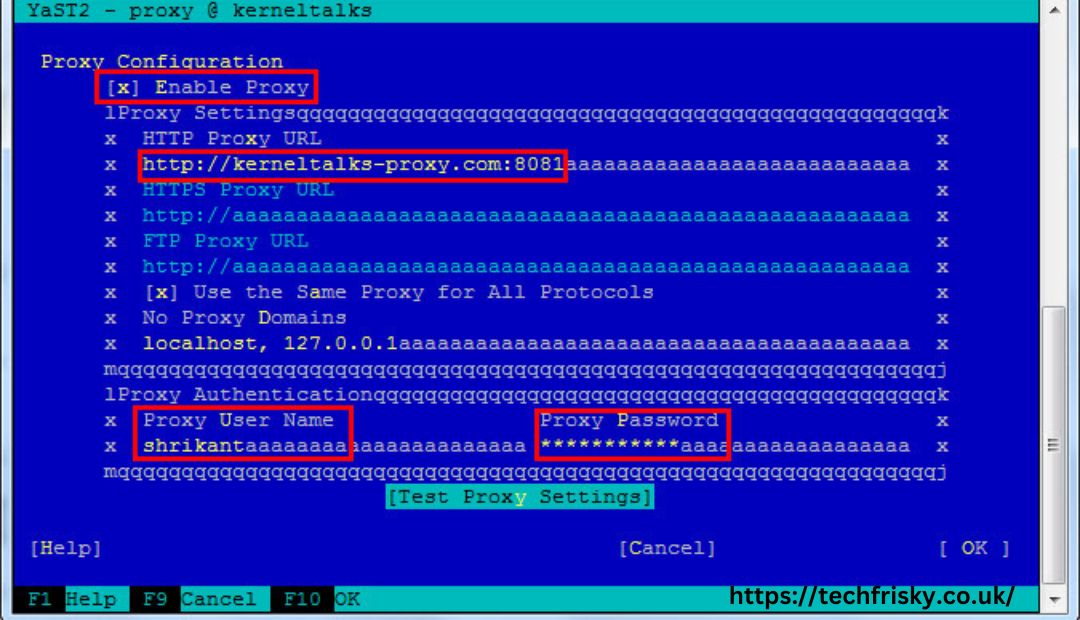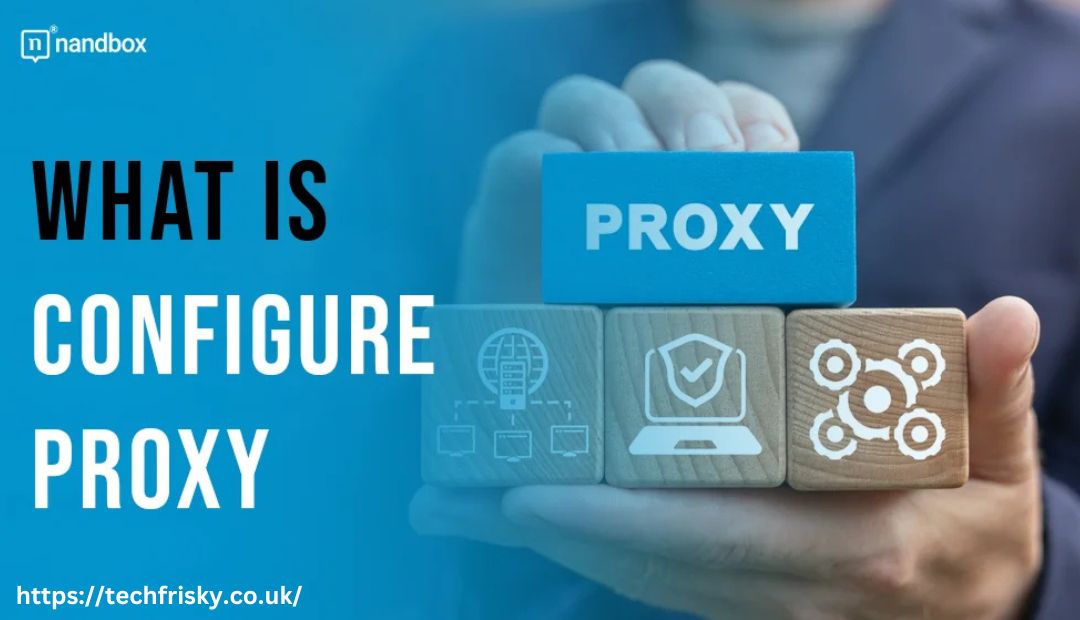Configuring a proxy server is a key element of online privacy protection. In this article we’ll cover what it means to set up a proxy, its importance and how to implement one on devices and browsers.
To configure proxy meaning server on your device or browser, access its network settings and enter its address and port number into it.
Understanding Proxy Configuration
Proxy settings play an integral role in today’s digital era, serving as a protective intermediary between your computer or device and the internet.
They offer anonymity, enhanced security measures, and access to geo-restricted content – but to get the most from it you must first understand its functions and how best to configure it.
Configure Proxy Meaning
configure proxy meaning server allows businesses to filter, process and cache incoming and outgoing internet traffic before it reaches devices or browsers – this feature allowing businesses to manage data flows and content within corporate environments more effectively than before.
Furthermore, proxy servers offer additional protection from cyber threats, providing greater privacy and safety for all connected devices on company networks.
Set Up A Proxy
To set up a proxy, first connect to the network you wish to configure. Select Wi-Fi network and tap Modify Network; if the network uses Proxy Auto-Configuration (PAC) files, toggle them On and enter hostname or IP address as well as port number provided by proxy provider.
Benefits of Configuring a Proxy
Proxy servers help to protect computer data by filtering internet traffic and monitoring browsing behavior. Though not necessary in all networks, proxies are commonly employed as an effective measure to increase network security and productivity.
configure proxy meaning When configured correctly, proxies can protect device privacy, prevent data breaches, speed browsing speeds, and increase content access.
To set up a proxy on your device, access its network settings and choose an appropriate network type. Finally, save and restart your device before saving these changes and making permanent adjustments.
Various Types of Proxies
There are various types of proxies, each offering different features and advantages. Public proxies are free to use but can be slow or laggy; private ones provide higher speed, data protection and are tailored specifically to an individual user.
configure proxy meaning Furthermore, proxy can help conceal one’s location or access content that would normally be restricted geographically – an invaluable asset both personally and professionally.
What Does Configure Proxy Mean
Proxy servers are computers that serve as intermediaries between clients (like web browsers) and servers (like websites) by acting as an intermediary between them and one or both servers.
They perform various functions, including hiding IP addresses, filtering content and caching data for faster access as well as providing security measures by controlling inbound and outbound traffic flows.
On an IPhone
On an iPhone configure proxy meaning, this can be accomplished by accessing the Settings app and tapping Wi-Fi___33; once located, find your current Wi-Fi connection and tap its information icon for modification.
Access The Proxy Server’s URL from A Proxy
From here, you can select whether the network should automatically configure proxy settings or whether they should be manually entered by you.
If automatic configuration occurs, your iPhone will access the proxy server’s URL from a proxy auto-configuration script (PAC file) provided by network admin; if manual entry occurs instead, enter IP address and port numbers manually along with authentication options if applicable.
How to Configure a Proxy
Before making changes or making any decisions about them, however, configure proxy meaning it’s essential that you fully comprehend how they operate and their capabilities.
Proxy Settings
Proxy settings determine when and how internet requests are routed through a proxy server. They can be configured at either a network level, device/browser level, or both simultaneously; some browsers and devices automatically configure their proxies while others require manual configuration.
Changing Proxy Settings
For changing proxy settings on a device, open the Settings app and select your Wi-Fi network of choice from its list of available networks.
Tap on the information icon for additional networking details; if your network requires authentication, choose Manual in Proxy Setting before providing proxy details (Server address, Hostname and Port number).
Changed Your Proxy Settings
Once you’ve changed your proxy settings configure proxy meaning, test them by visiting a website that lists your IP address. If the website displays the proxy’s IP instead of your own, your proxy is functioning as it should be.
If using automatic configuration options such as rebooting your device or following any prompts for changes to take effect.
Manual Configuration Steps
Proxies provide many advantages between devices and the internet, providing anonymity, enhanced security, and access to geo-restricted content.
Proxies are an invaluable asset for businesses, students and anyone needing extra protection against cyber threats.
Set Up a Proxy On Your Computer
To set up a proxy on your computer, it is first essential that you purchase one from an established online service.
After purchasing, enter its details into your network settings by providing its IP address, port number and username/password combination.
Set Up a Proxy On Your Smartphone
To set up a proxy on your smartphone, first enable Wi-Fi and select your network from within the Settings app.
Navigating to Networks then tapping Modify Network will let you modify it manually before entering proxy details in Server, Port and Proxy Auto-Config sections – or use Proxy Auto-Config by inputting its address.
Best Practices for Proxy Configuration
Proxy configuration is a key component of online privacy and security, providing content access when needed. Understanding its inner workings and following best practices allows organizations to improve network performance while increasing protection from modern cyber-attacks.
Purchase a Proxy Server
In order to set up a proxy on Wi-Fi, you’ll first need to obtain the proxy server address and port number from your provider. With these details in hand, enter them into your network settings of both device or browser in order to create a connection through it.
Using A Proxy Server
When using a proxy server configure proxy meaning, it’s essential to remember that its location can be easily discovered by attackers via IP addresses that reveal physical locations of devices.
Therefore, selecting a reliable proxy provider who offers secure, fast, and reliable services is of utmost importance in order to maintain security against cyber attackers and enhance performance.
Authentication and logging protocols
Authentication and logging protocols should also be enforced to prevent unauthorized access while improving performance – and regular testing/updating proxy configurations is highly advised so as to identify vulnerabilities in time before being exploited by cyber attackers.
Exploiters Exploit Vulnerabilities
Exploiters exploit vulnerabilities before cyber attackers exploit them by cyber attacker’s exploit / exploited by cyber attackers/etc. /.
Why Configure Proxy on iPhone?
Configure proxy meaning Colleges, schools and workplaces frequently require users to set up proxies in order to monitor network activity, prevent access to inappropriate material and reduce bandwidth consumption. Proxies also serve to protect privacy by hiding IP addresses and blocking direct access to your device.
Apple IOS Device Owners
Apple iOS device owners can set up a proxy by accessing Settings > Wi-Fi > your current network and tapping on the circled i icon.
A list of available networks and a “Configure Proxy” option at the bottom will appear; select it, and follow its prompts to enter proxy server, port number, and authentication details.
Setting Up A Proxy On Your IPhone
Note that when setting up a proxy on your iPhone, all internet traffic will pass through it and this could result in bandwidth issues or cause certain apps not working as intended.
To stop using the proxy setting and uninstall it from use altogether, go into your iPhone’s Wi-Fi settings and choose the network you wish to change before scrolling down until reaching Configure Proxy menu and choosing Off option.
How to Configure Proxy on iPhone
Most schools, colleges, and workplaces employ proxy servers to route internet traffic for security, privacy, and efficiency reasons.
Proxy servers may be either private residential or datacenter based and they hide your IP address while browsing. In addition, these proxies can help bypass content or geoblocks that prevent you from accessing specific sites or data.
Configure A Proxy On An IPhone
To configure a proxy on an iPhone, configure proxy meaning, open the Settings app and navigate to your Wi-Fi network page. On that network’s page, tap “i” for Wi-Fi settings – this will bring up an open Wi-Fi configuration screen where you can change server address, port number and authentication details as needed.
Ensure That Your IPhone Is Connecting Through The Proxy You Set Up
If you want to ensure that your iPhone is connecting through the proxy you set up, a free IP checker can help ensure its current public IP address matches with what was set as its logged-in IP address.
By doing this, you know your iPhone is using and functioning correctly with its proxy configuration – plus this method also serves to pinpoint any potential issues with its implementation.





